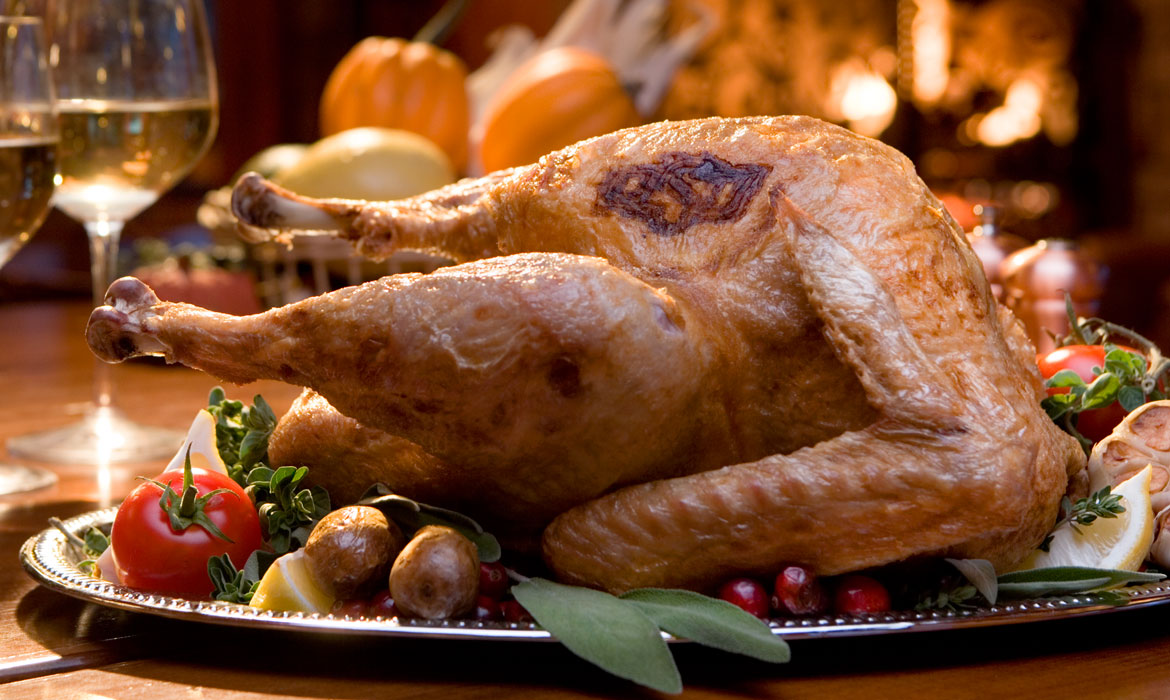
Thanksgiving options in Stillwater
Monday, November 25, 2019
If you’re staying in Stillwater for the holiday, options do exist for a festive feast.
While campus restaurants will have reduced hours this week and will be closed Thursday, other dining options are available:
- 35th Annual Stillwater Community Thanksgiving Lunch, 11:30 a.m.-1:30 p.m. Thursday, First United Methodist Church, 400 W 7th Ave. This free Thanksgiving meal is open to all.
- Stillwater restaurants open for business on Thanksgiving day include IHOP, Nana’s Mexican Kitchen (open until 2 p.m.) and Shortcakes Diner.
For those hoping to recreate a little home cooking, OSU residence halls offer either in-unit kitchens or community kitchens. Here are some helpful tips for (safely) cooking up your own Thanksgiving meal.
Food handling
Buy only government-inspected meat and poultry products, and check the “sell by” date on all food purchases. Never buy products if the expiration date has passed.
Wash your hands thoroughly before and after preparing any food product.
Use two cutting boards: one for preparing raw meat, poultry and fish, and the other for cutting cooked food or preparing salads.
Food preparation
Never thaw the turkey on the counter. Thawing at room temperature increases the risk of bacteria growth at the surface of the meat even though the interior may still be chilled.
Thaw the turkey in its original wrapper on a tray placed in the bottom section of the refrigerator. Allow approximately 24 hours of defrost time for every five pounds of turkey.
Thawing the turkey in cold water is safe. Submerge the bird in its wrapper in a deep sink of cold water and change the water every 30 minutes to keep it cold. Allow 30 minutes per pound to defrost a turkey in cold water.
Stuffing the turkey
Use a meat thermometer to determine when the turkey is done.
Insert the thermometer in the thickest part of the turkey thigh. Be aware dark meat takes longer to cook than any other part.
The turkey is done when the thermometer reaches 165 degrees Fahrenheit.
Basting the turkey while it is cooking is not necessary. Basting tools could be sources of bacterial contamination if dipped into uncooked or undercooked poultry juices and then allowed to sit at room temperature for later basting.
Do not cook a turkey overnight in an oven set at a low temperature. Cooking a turkey at a temperature below 325 degrees Fahrenheit allows harmful bacteria to multiply.
Once the turkey is done, remove the stuffing immediately.
If you purchase a fully cooked turkey, pick it up hot and bring it home to eat immediately.
Storing leftovers
After the meal, remove all meat from the turkey carcass. This should be done within two hours of the turkey’s removal from the oven.
Leftovers should be stored in the refrigerator within two hours after cooking is complete.
Leftovers should be divided into smaller portions and stored in several shallow containers. They should be eaten within three to four days.
If large amounts are left, consider freezing for later use. Do not wait until the leftovers have been in the refrigerator for several days to freeze. Frozen leftovers should be eaten within six months.
Eating leftovers
Reheat leftovers to 165 degrees Fahrenheit throughout or until steaming hot. Soups, sauces and gravies should be brought to a rolling boil for at least one minute.
Never taste leftover food that looks or smells strange. When in doubt, throw it out.
FAPC, a part of the OSU Division of Agricultural Sciences and Natural Resources, helps to discover, develop and deliver technical and business information that stimulates and supports the growth of value-added food and agricultural products and processing in Oklahoma.
